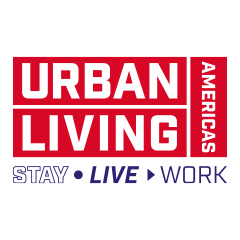Carehaus Baltimore, which is scheduled to break ground in 2024, will provide housing for seniors and disabled people, as well as for their professional carers. All will live together in a multigenerational building, making Carehaus one of the first care-based cohousing projects in the US.
A first location, in central Baltimore, will feature 21 units, housing 16 older adults and disabled people, four carers with their families, and a site manager. Carehaus will also have a team of experts in nutrition, fitness, art and wellness.
Carehaus is planning a second location in Chicago, where the company has already bought land.
“There’s a big jump between living alone and needing a nursing home. But there’s nothing to serve this middle ground,” said Ernst Valery, the founder and president of Ernst Valery Investments Corp., and a co-founder and the real-estate developer for Carehaus.
“We’ve gotten away from community, where seniors didn’t need to worry about shovelling their walks because the neighbours did it, or worry about bringing up groceries because the kids in the neighbourhood would help,” Valery added. “We’ve got a ‘You’re on your own’ type of society.”
The Carehaus partners sought input from professional carers, family carers, architects, disability advocates, gerontologists and community members in the Baltimore neighbourhood.
The building will include special cues to help residents navigate the space, such as textured floorboards to help a resident with low vision know they are approaching the kitchen. It also features outdoor gardens and terraces. Retail space will be located on the ground floor.
“With the silver tsunami, many people don’t need round-the-clock care. They need shared care or congregate care,” said Marisa Moran Jahn, a New York City-based artist and co-founder of Carehaus.
While Carehaus will provide lower housing costs than those involved in independent living, it is not technically affordable housing, Valery said.
By living at Carehaus, caregivers can eliminate a commute, work in shifts and get help from other caregivers when lifting an older adult. Child care is also a big burden for caregivers, Jahn said, and the communal setting will allow workers to care for the children when they’re not caring for the older adults.
“Carehaus is like a Swiss Army knife of housing solutions: elegant design, useful for multiple generations and configurations,” said Sarah Szanton, the dean of the Johns Hopkins School of Nursing. “On top of that, it could be a sustainable model for the best parts of communal living.”
The biggest challenge in the caregiving industry is high turnover, Jahn said. “Caregivers face such isolation. It affects mental health and physical health – lifting someone from a bed or bath — [and] you need help. Sharing the care and rotating shifts will provide breaks and help for the caregivers. The hardest-hit caregivers are the single mothers with small children. They’re most in need of some communal help.”
Carehaus will pay higher-than-average wages, provide child-care assistance and offer discounted rents for the caregivers, Valery said.

















